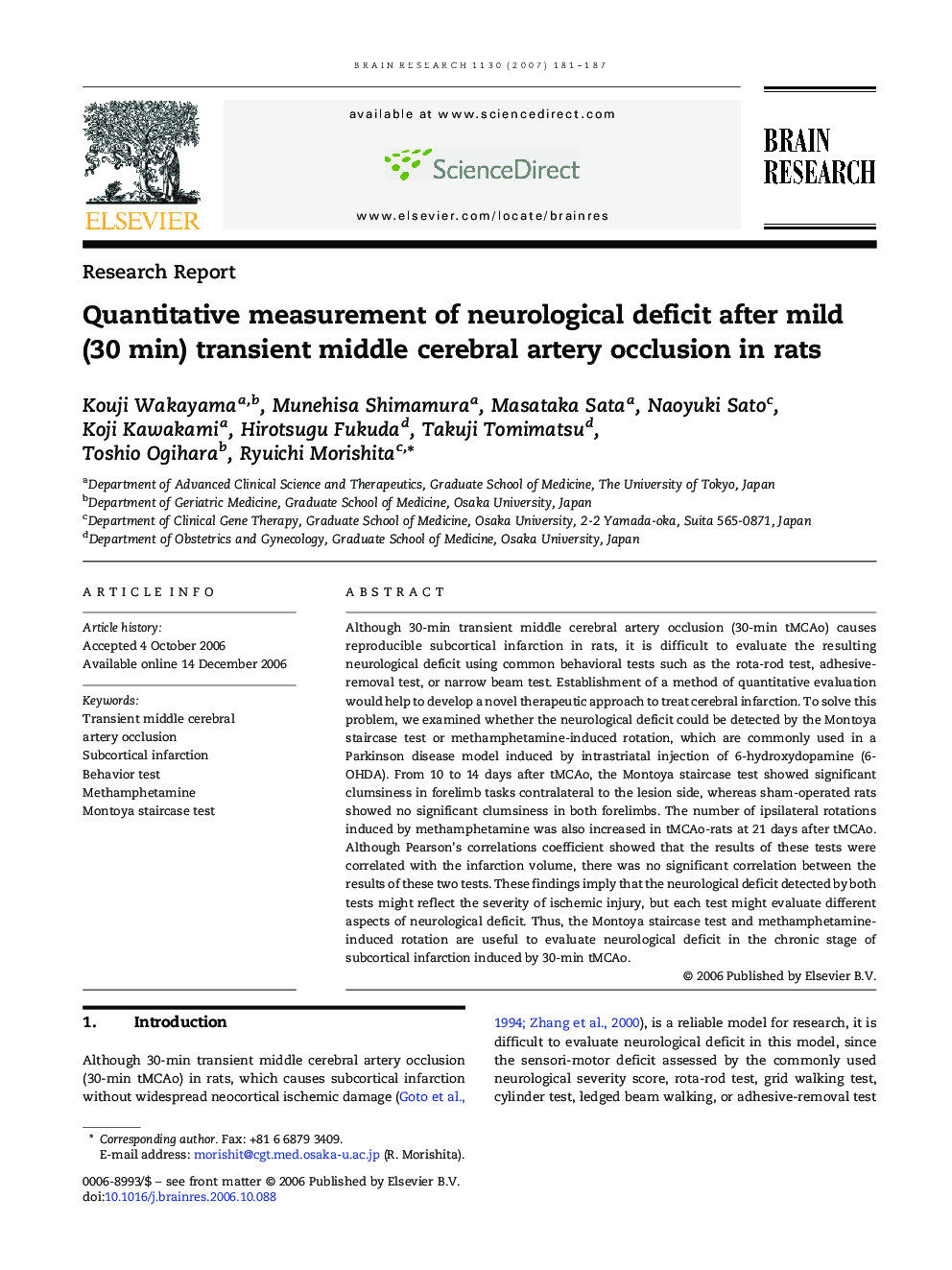| Article ID | Journal | Published Year | Pages | File Type |
|---|---|---|---|---|
| 4331686 | Brain Research | 2007 | 7 Pages |
Although 30-min transient middle cerebral artery occlusion (30-min tMCAo) causes reproducible subcortical infarction in rats, it is difficult to evaluate the resulting neurological deficit using common behavioral tests such as the rota-rod test, adhesive-removal test, or narrow beam test. Establishment of a method of quantitative evaluation would help to develop a novel therapeutic approach to treat cerebral infarction. To solve this problem, we examined whether the neurological deficit could be detected by the Montoya staircase test or methamphetamine-induced rotation, which are commonly used in a Parkinson disease model induced by intrastriatal injection of 6-hydroxydopamine (6-OHDA). From 10 to 14 days after tMCAo, the Montoya staircase test showed significant clumsiness in forelimb tasks contralateral to the lesion side, whereas sham-operated rats showed no significant clumsiness in both forelimbs. The number of ipsilateral rotations induced by methamphetamine was also increased in tMCAo-rats at 21 days after tMCAo. Although Pearson's correlations coefficient showed that the results of these tests were correlated with the infarction volume, there was no significant correlation between the results of these two tests. These findings imply that the neurological deficit detected by both tests might reflect the severity of ischemic injury, but each test might evaluate different aspects of neurological deficit. Thus, the Montoya staircase test and methamphetamine-induced rotation are useful to evaluate neurological deficit in the chronic stage of subcortical infarction induced by 30-min tMCAo.
